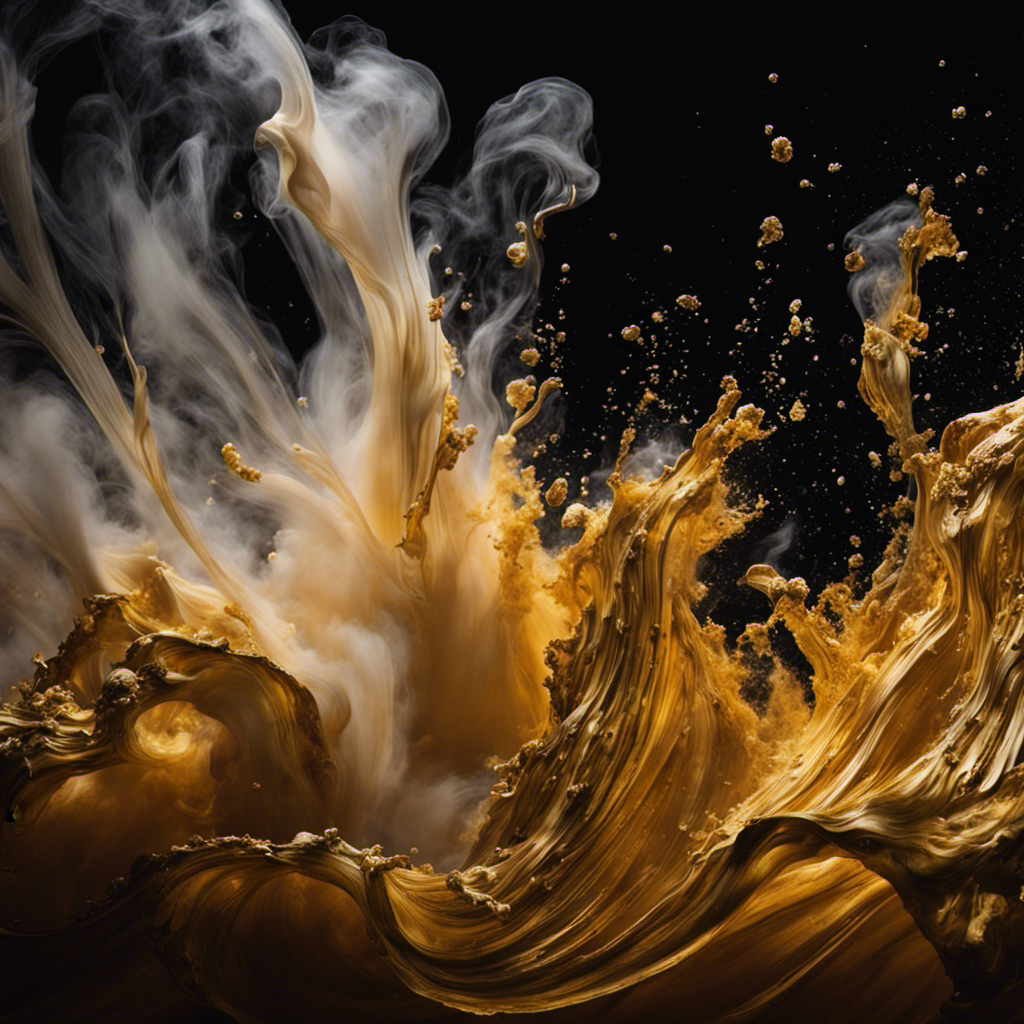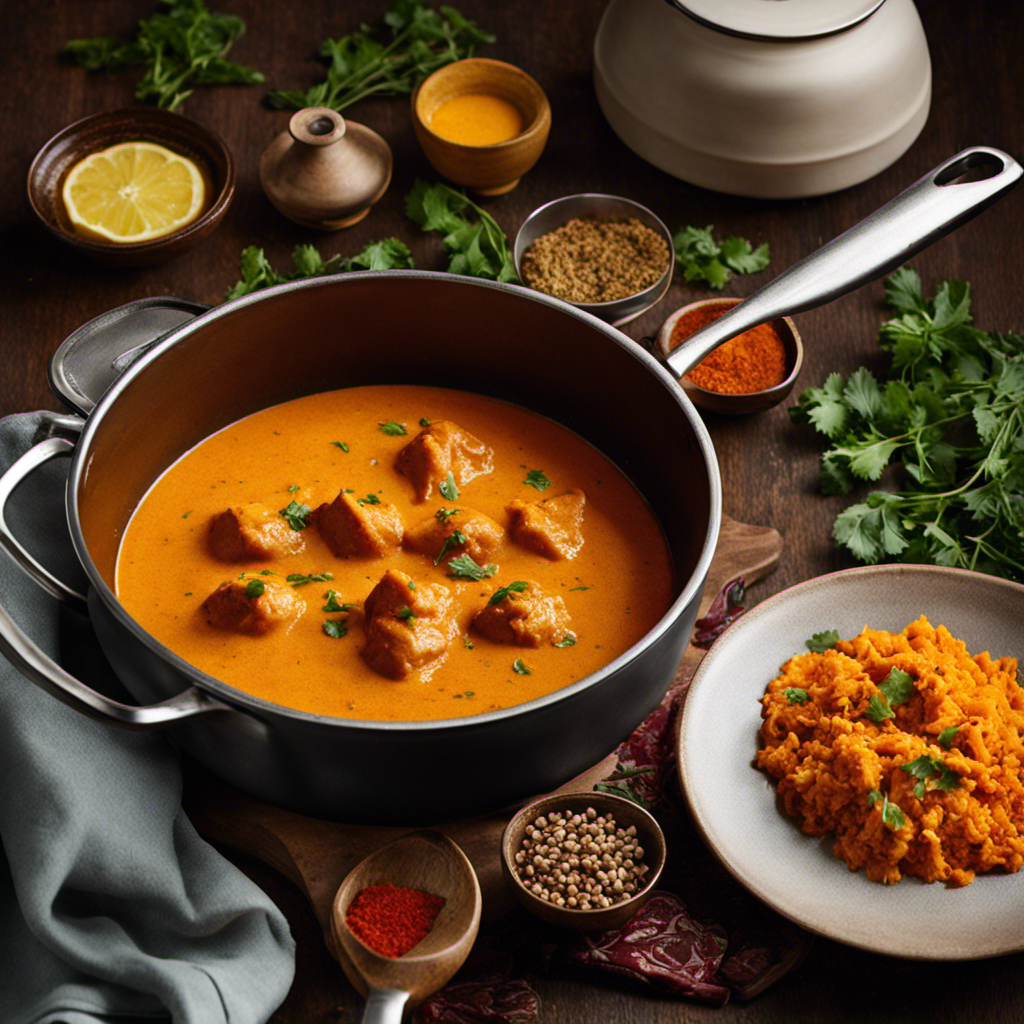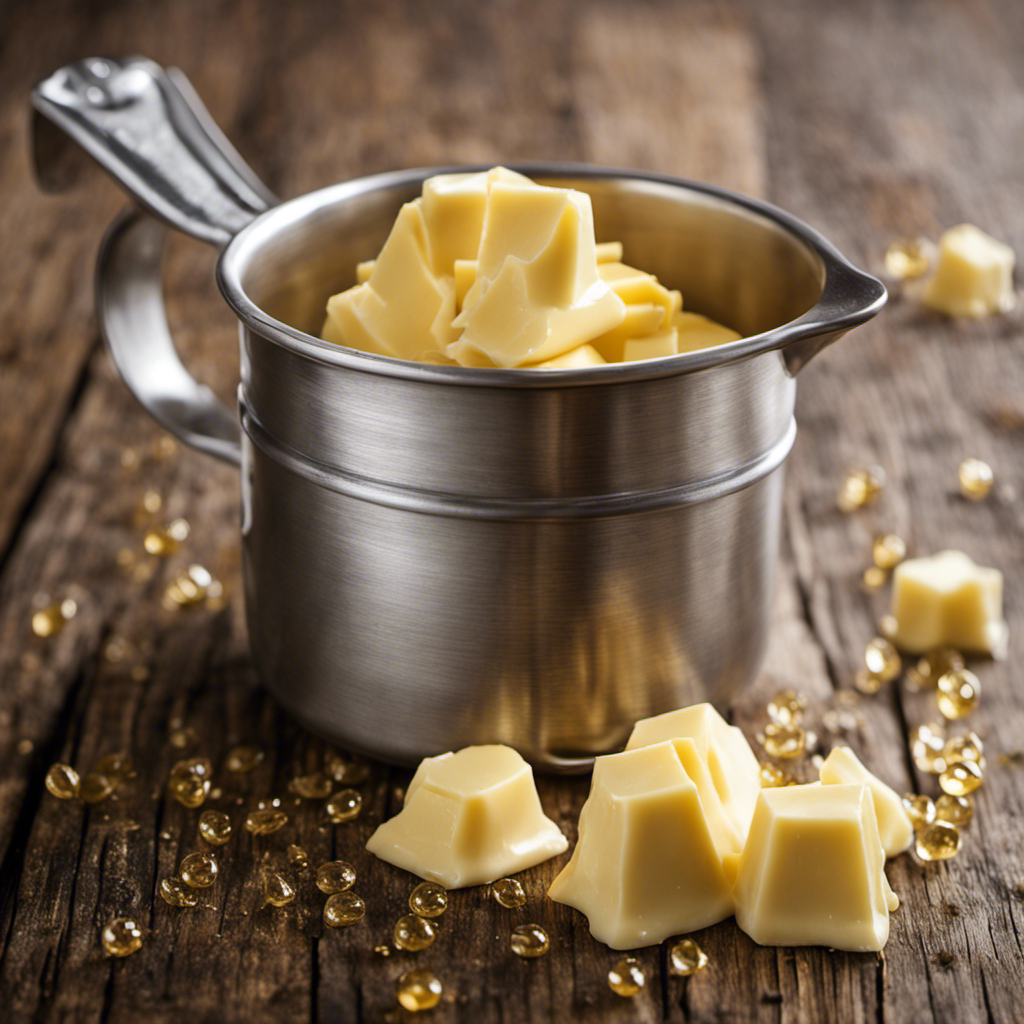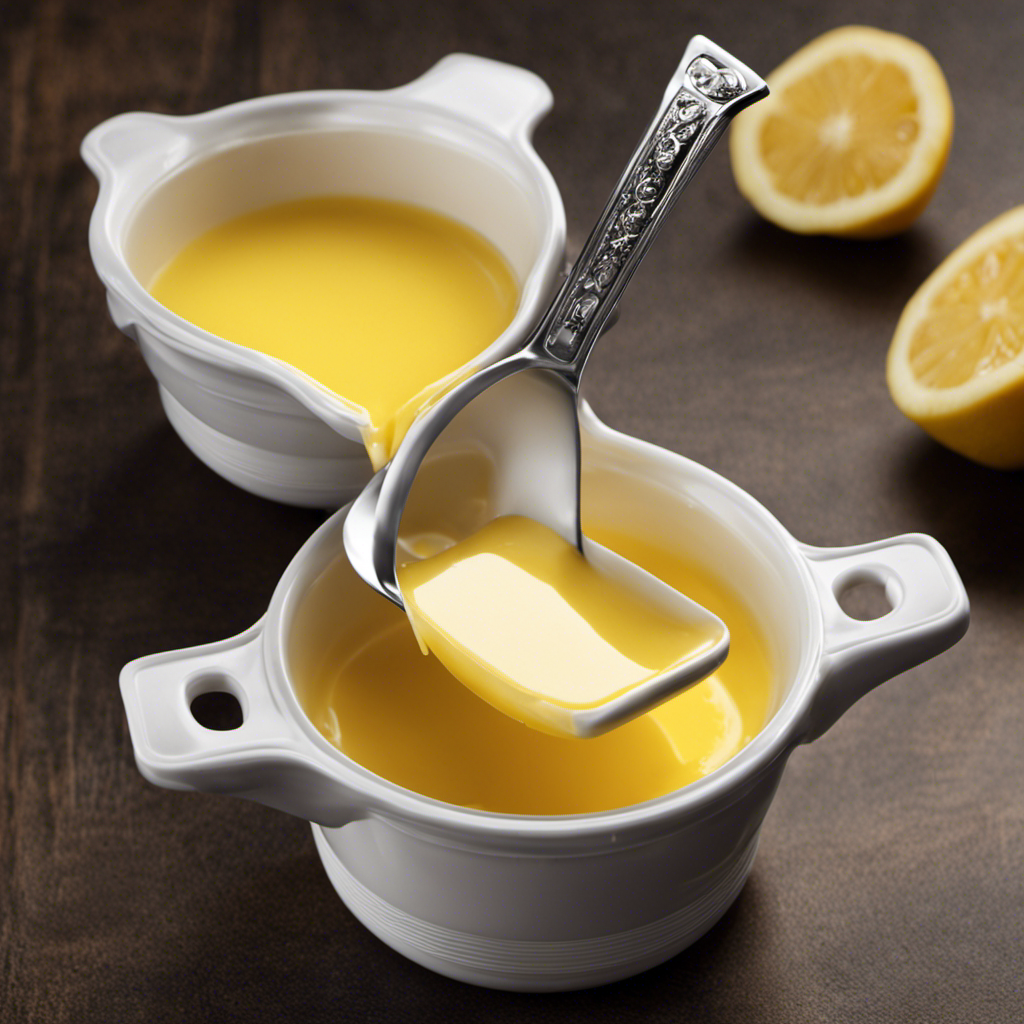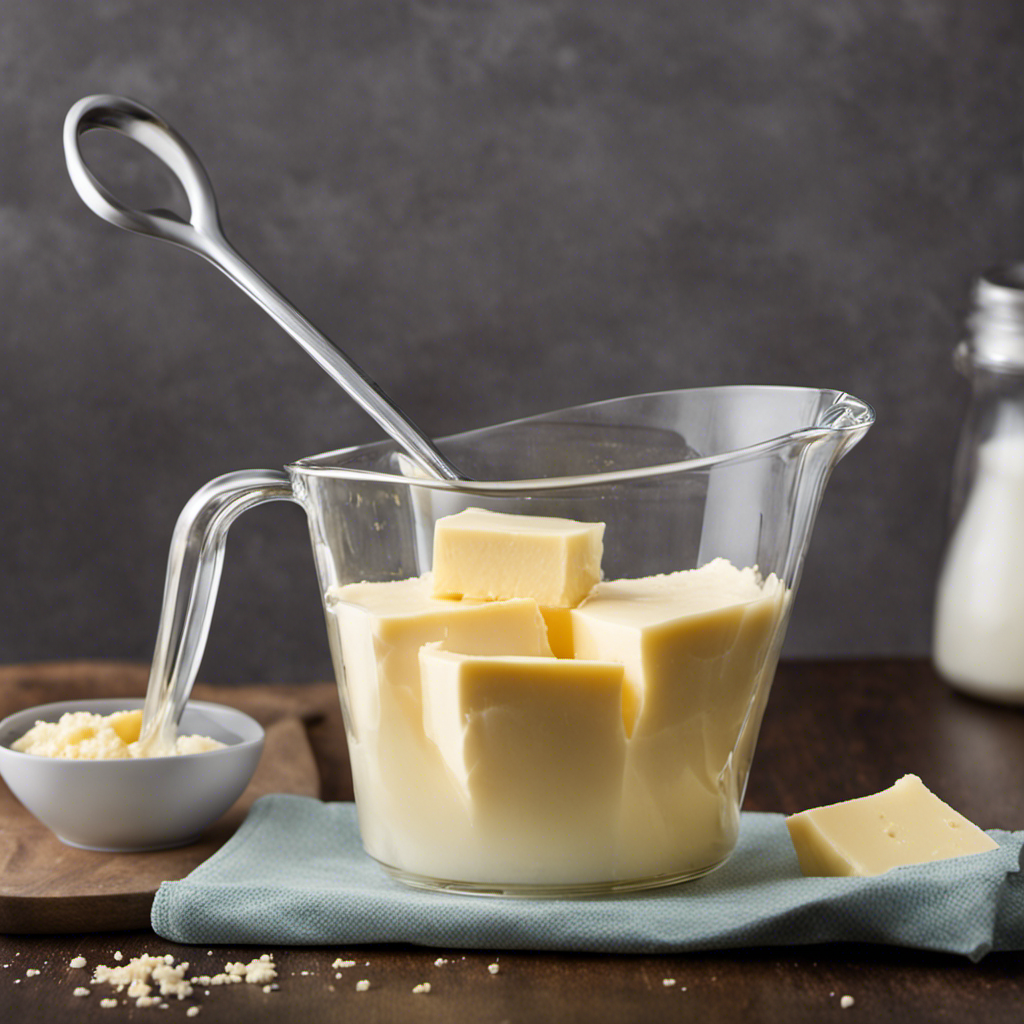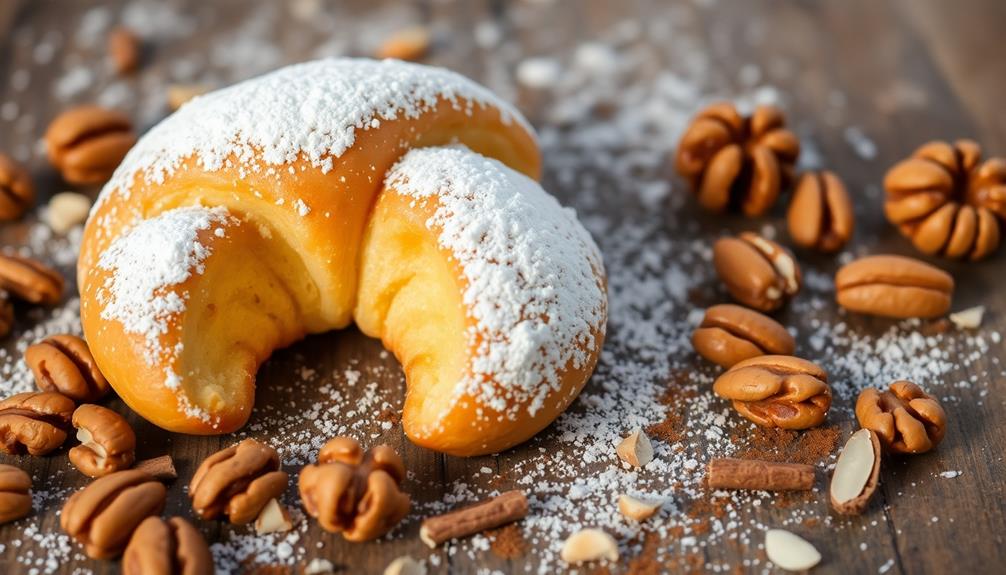Ever curious about whether your brown butter has tipped over from being delightfully nutty to sadly burnt? Fear not, we’re here to help. In this article, we’ll guide you through how to detect if your brown butter is overcooked using a few easy checks.
By using your senses and a little know-how, you’ll be able to avoid that bitter taste and enjoy the perfect brown butter every time.
So let’s dive in and save your next batch of buttery goodness!
Key Takeaways
- Visual indicators of burnt butter include a dark brown or black color, charred residue, separation of oil and solids, and visible smoke or burning particles.
- Smell indicators of burnt butter include an unpleasant odor, burnt or acrid smell, smoky aroma, and rancid or spoiled scent.
- Taste indicators of burnt butter include a bitter or burnt aftertaste, while properly browned butter has a nutty and caramelized flavor.
- Texture indicators of burnt butter include a deep brown color, an unpleasant smell, a bitter or acrid taste, and the presence of sticky or hard residue.
The Color Test
If it looks dark brown or black, you’ve burnt the brown butter. When making brown butter, it is crucial to pay attention to its color changes as visual cues.
Begin by melting butter in a saucepan over medium heat. As the butter melts, it will go through several stages. At first, it will foam, and the color will be a light yellow. This is the stage where the water content evaporates.
Next, the foam will disappear, and the butter will turn a golden brown color. This is the desired stage for brown butter. However, if you continue heating, the color will darken further, and eventually, it will become dark brown or black, indicating that it is burnt.
Remember to remove the butter from heat as soon as it reaches a rich golden brown color to avoid burning it.
The Smell Test
To determine if the brown butter is burnt, take a whiff and see if it smells slightly nutty or has a pleasant caramel aroma. Sensory evaluation is an important aspect of butter browning techniques, as it allows you to gauge the quality of the final product. Here are some key indicators to look out for during the smell test:
- Nutty aroma: A slightly toasted, nutty smell is a good sign that the butter has been browned properly.
- Caramel scent: If the butter gives off a sweet, caramel-like aroma, it is a clear indication that it has been cooked to perfection.
- Burnt or acrid smell: If the butter smells burnt or has a bitter, unpleasant odor, it is likely that it has been overcooked and is no longer suitable for use.
The Taste Test
Now it’s time to take a bite and see how the brown butter tastes. When evaluating the quality of brown butter, it’s important to detect signs of burnt butter.
Start by paying attention to the color. Brown butter should have a rich, golden hue. If it appears dark brown or black, it’s likely burnt.
Next, assess the aroma. Brown butter should have a nutty, caramelized scent. If it smells acrid or burnt, it’s a clear sign of overcooking.
Finally, taste the brown butter. It should have a smooth, buttery flavor with hints of toasted nuts. If it tastes bitter or has a burnt aftertaste, it’s definitely burnt butter.
The Texture Test
When it comes to determining if butter is burnt, there are three key indicators to look out for.
First, the color of the butter can give you a clear indication of whether it has been overcooked. A deep brown color is a sign that the butter has crossed the line into burnt territory.
Second, pay attention to the aroma of the butter. If you detect a strong, unpleasant smell, it’s a surefire sign that the butter has been overcooked.
Lastly, the taste of the butter will reveal any burnt flavor. If you notice a bitter or acrid taste, it’s a clear indication that the butter has been burnt.
Color Indication of Burn
You can tell if brown butter is burnt by looking at its color, which should be a rich golden brown rather than a dark brown or black. Burnt butter can ruin the flavor of your dish, so it’s important to identify it before using it in your cooking.
Here are some key points to help you determine if your brown butter is burnt:
-
Color: Burnt butter will have a dark brown or black color, indicating that it has been cooked for too long.
-
Smell: Burnt butter will have a strong, unpleasant smell that is reminiscent of burnt popcorn or charred food.
-
Taste: Burnt butter will taste bitter and acrid, completely different from the nutty and caramelized flavor of properly browned butter.
Aroma Detects Overcooking
To detect overcooking, simply follow your nose and pay attention to the aroma. Aroma detection is an important tool in determining if your brown butter has been burnt. When butter is heated, it undergoes a process called browning, where the milk solids caramelize and release a nutty fragrance.
However, if the butter is left on the heat for too long, it can go from perfectly browned to burnt. The aroma of burnt butter is distinctly unpleasant, resembling a charred or acrid smell. It is important to note that visual cues alone may not be enough to determine if the butter is burnt, as the color may still appear acceptable.
Therefore, rely on your sense of smell to ensure your brown butter is cooked to perfection.
Taste Reveals Burnt Flavor
The burnt flavor of overcooked butter can be detected through taste. When you take a bite of something made with burnt butter, you’ll immediately notice a bitter and acrid taste. To help you identify the signs of overcooking, here are some key indicators to look out for:
- Dark color: Burnt butter will have a deep brown or black color, indicating that it has been cooked for too long.
- Smoky aroma: Overcooked butter will emit a strong, burnt smell that is unpleasant and overpowering.
- Charred residue: If you see any blackened bits or specks in the butter, it’s a sign that it has been burnt.
By paying close attention to these signs, you can avoid using burnt butter in your recipes and ensure that you achieve the desired flavor.
Now, let’s move on to the next section and learn about the time test for determining if brown butter is burnt.
The Time Test
If it’s been cooking for more than a few minutes, it’s likely burnt. Burnt butter can ruin the taste of your dish, but there are alternatives to using burnt butter and ways to prevent it from happening in the first place. One alternative is using clarified butter, which has a higher smoke point and is less likely to burn. Another alternative is using ghee, which is a type of clarified butter commonly used in Indian cooking. To prevent burnt butter, you can keep an eye on it and stir constantly to ensure even heat distribution. Additionally, you can use a lower heat setting and a heavy-bottomed pan to prevent the butter from burning.
| Burnt Butter Alternatives | Preventing Burnt Butter |
|---|---|
| Clarified butter | Constant stirring |
| Ghee | Lower heat setting |
| Heavy-bottomed pan |
The Clarity Test
Keep in mind that the clarity test will help you determine if your butter is properly clarified. This test is crucial in determining whether your brown butter has been burnt or not.
To perform the clarity test, follow these steps:
-
Look for visual cues: Burnt butter will have a dark brown or black color, indicating that it has been overheated and is no longer suitable for use.
-
Conduct a texture analysis: Properly clarified butter should have a smooth and silky texture. If the butter feels gritty or has a grainy consistency, it is likely burnt.
-
Smell the butter: Burnt butter will have a strong, unpleasant odor. If you detect a burnt or acrid smell, it is a clear sign that the butter has been overheated.
The Residue Test
Performing the clarity test will help determine the suitability of the butter. This test involves checking for visual cues, conducting a texture analysis, and smelling the butter for any unpleasant odors.
Another important test to consider is the residue test. This test involves examining any residue left behind after heating the butter. Burnt butter will leave a dark, charred residue that indicates it has been overheated and is not suitable for consumption.
It is important to note that consuming burnt butter can pose potential health risks. The high heat can cause the formation of harmful compounds.
If you accidentally burn your butter, there are alternative uses for it. You can incorporate it into recipes that call for a smoky flavor or use it as a topping for popcorn or roasted vegetables.
Conclusion
In conclusion, determining whether brown butter is burnt or not requires keen observation and utilizing all your senses. By conducting the color, smell, taste, texture, time, clarity, and residue tests, you can confidently ascertain the quality of your brown butter.
Remember, it’s always better to be safe than sorry when it comes to culinary endeavors. So, don’t hesitate to employ these tests and avoid serving your guests a dish with a ‘burnt toast’ flavor.
